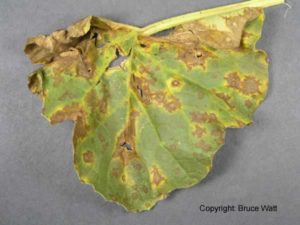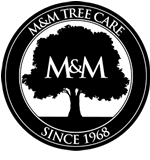Disease always ruins things, especially in trees. Disease ruins the perfectly good shade, it ruins the value of your property, and it ruins the safety of your trees. Learning to identify the signs of common diseases will help protect your trees. One culprit that is common in Wisconsin is Anthracnose disease. Anthracnose disease is a group of ugly fungal infestations that defoliate trees and can lead to infection. Let’s explore this disease and look at how you can save your Wisconsin tree from Anthracnose.
Who Should Be On Guard for Anthracnose Disease?
According to the University of Wisconsin Extension, Anthracnose disease in Wisconsin attacks woody ornamentals like maple, ash, white oak, and walnut. Sycamores suffer particularly because they can develop twig infections. In addition, if the fungi defoliates trees 3 or more years in a row, it stresses the trees and makes them more vulnerable to other pests.
Get Help with Diagnosing Anthracnose Disease
Anthracnose Symptoms
The word Anthracnose means “ulcer-like sore.” This perfectly describes the cankers that appear on some affected trees. Anthracnose disease symptoms vary by tree species, but there are some common threads:
- Irregular Spots

- Dead areas of leaves that follow the veins of the affected leaves
- Dead areas between veins
- Leaves curling and falling off
- Leaves look water-soaked, brown, purple, or black before becoming tan.
- Typically hits lower half of canopy, frequently leaving a top rim of healthy leaves
- Early spring prime disease time
- Microscopic pimple-like structures on underside of leaves and on discolored, slightly sunken bark areas
- Buds dying off early in the season, like frost damage
Here are the key signs to look for some specific tree species:
- Sycamore Tree
- Twig dieback
- Can regrow leaves
- Walnut Tree
- Attacked in late summer and early fall
- Maple Tree
- Very dark splotches
- White Oak Tree
- Won’t lose leaves
Anthracnose Prevention And Cure
Regardless of tree species, Anthracnose fungi lives in infected fallen leaves and branches around a tree. When it turns cold and moist, the fungi will reinfect trees during leaf bud break. The best way to avoid Anthracnose disease is to ensure that someone eliminates the leaves under the trees in the fall.
You can also tackle Anthracnose by applying a fungicide. Fungicides are best for sycamore trees or on trees that have been defoliated several years in a row. Either way, it’s best to leave this up to a professional or arborist. The state of Wisconsin authorizes using fungicides containing copper, chlorothalonil, or mancozeb to fight Anthracnose. It can be applied when leaves start to bud, but you have to apply it repeatedly and remember to use different active ingredients for each application or the fungi will develop resistance. It is also important to realize that what works for one type of fungi in the Anthracnose family might not work on the others.
Anthracnose blights many trees, and once it gets yours, it is tricky to defeat. Do not hesitate to contact an expert if you see any of the above mentioned symptoms or if your tree’s leaves have brown spots. A certified arborist will quickly determine if your tree is diseased and how to treat it.
Contact a Pro
Share this Post

